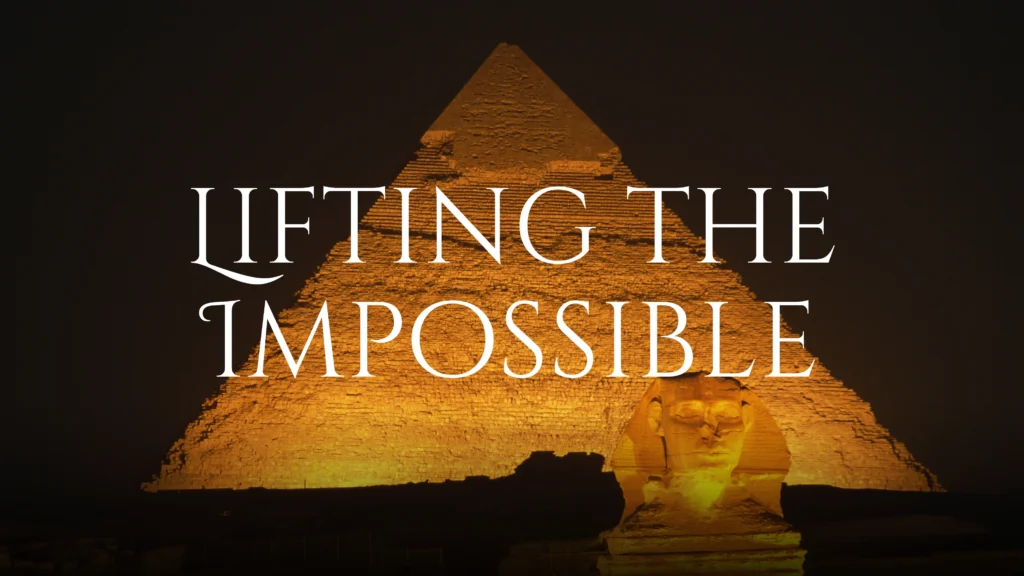
For thousands of years, the Egyptian pyramids have stood tall across the desert sands, reminding us of a powerful civilization that once ruled the Nile. These ancient stone giants weren’t just graves—they were meant to help pharaohs reach the heavens. Today, scientists and historians continue to explore how the Egyptians managed to build such incredible monuments, especially without modern machines.
The Origins of the Pyramids
Long before the Great Pyramid of Giza existed, Egyptians buried their dead in simple, flat-roofed structures called mastabas. These were made of mud bricks and looked like benches. Over time, their design changed. The first real pyramid was the Step Pyramid of Djoser, built during Egypt’s 3rd Dynasty. It looked like giant steps stacked on top of each other, and marked the beginning of large stone construction in Egypt.
According to Egyptologists, pyramids were more than just tombs. They believed the pointed shape helped the pharaoh’s soul rise to the sky. “The megalithic monuments in the Saharan region may have served as antecedents for the mastabas and pyramids of ancient Egypt,” historian Fekri Hassan explained, as quoted on Wikipedia.
The Puzzle of Pyramid Construction
Building these massive pyramids has always been a mystery. How could people without cranes or trucks lift stone blocks that weighed several tons? One common theory says they used ramps made of mudbrick, sand and clay. These ramps may have wrapped around the pyramid or gone straight up the side. Workers used sledges and levers to pull the blocks into place.
Greek historian Herodotus once claimed that 100,000 workers built the Great Pyramid in 20 years. But modern studies suggest that around 20,000 skilled laborers likely worked on the site full-time. Britannica notes, “The question of how the pyramids were built has not received a wholly satisfactory answer but the ramp theory remains the most plausible.”
A River Lost Beneath the Sand
A recent discovery might bring us closer to understanding the truth. Scientists found an ancient river hidden under the desert called the Ahramat Branch. This river once flowed near over 30 pyramids, including the ones at Giza. Over time, the water dried up and was buried under sand, and farmland.
Researchers used radar and satellite imagery to spot the buried waterway. “Radar gave us the unique ability to penetrate the sand surface and produce images of hidden features including buried rivers and ancient structures,” said lead scientist Eman Ghoneim.
This discovery makes sense. Boats could have used the river to carry stone blocks and workers directly to pyramid construction sites. That would have made the entire process much easier than dragging materials across dry land.
How the River Helped Build Pyramids
The Ahramat Branch flowed near Egypt’s old capital Memphis. Many pyramids had stone causeways leading from the pyramid down to temples that sat by this river. These temples may have worked as docks or harbors where materials were unloaded.
“The water’s course and its volume changed over time so fourth dynasty kings had to make different choices than 12th dynasty kings,” said co-author Suzanne Onstine.
Over 4,000 years ago, drought and desert winds slowly dried up the river. Layers of sand covered it completely. But now using deep soil samples and radar technology, scientists have traced its path. The study published in Communications Earth & Environment says, “Many of the pyramids, dating to the Old and Middle Kingdoms, have causeways that lead to the branch and terminate with Valley Temples which may have acted as river harbors.”
Stone or Something Else?
While most experts agree that ramps and rivers helped with construction, there’s another interesting idea. What if some pyramid stones were made not carved?
A scientist named Joseph Davidovits believes the Egyptians may have used an early form of concrete. They could have mixed limestone, clay, lime and water to form stones on-site. Some modern researchers support this. After studying pyramid blocks under a microscope, they noticed tiny structures that don’t usually form in nature. “The tops of the pyramids are likely cast, as it would have been increasingly difficult to drag the stones to the summit,” researcher Barsoum explained.
This theory doesn’t replace the ramp theory but adds a new layer to it. Maybe the Egyptians used different methods depending on the part of the pyramid they were working on.
Learning from the Past
The Ahramat Branch discovery is more than just a clue about pyramid building. It shows how closely the ancient Egyptians lived with nature. Their greatest achievements were shaped by rivers, weather and land.
“When we learn from the past we can prepare for the future,” Ghoneim said. As our world faces climate change, understanding how ancient people adapted to their environment might help us do the same.
From lost rivers to hidden construction tricks, the pyramids continue to teach us new things every year. And even though they were built thousands of years ago, the story of how they came to be is still unfolding.


